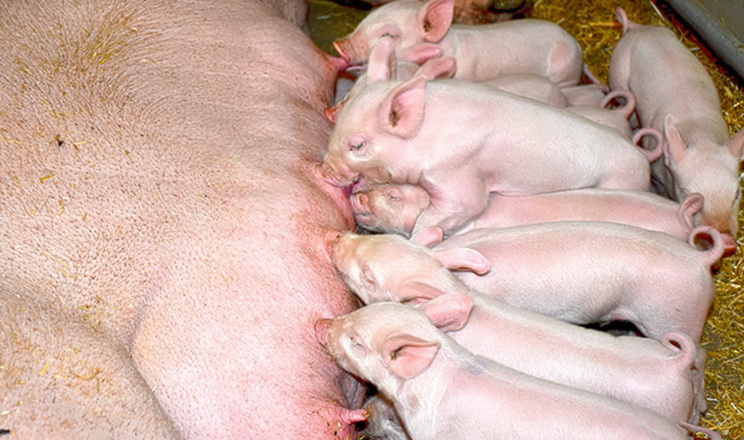The volume of milk that a sow produces during a day depends on many factors: size and number of the nest, stage of lactation, average productivity, individual characteristics of the animal.
As the number of piglets increases, they are born with lower than normal weight and by the time they are weaned, they also weigh less than those born in a nest with fewer piglets.
Often the nests are uneven. This requires top-notch management and service, as well as providing sows with nutrients and energy at a high level, a proper feeding strategy, and good equipment in the pig house.
The sows of the first and sixth farrows produce the least milk. The highest productivity is in sows of the second and third farrows, followed by the fourth and fifth farrows.
To determine lactation productivity, the average daily production rate is multiplied by the duration of lactation (days).
The daily milk production depends on the stage of lactation. After farrowing, it first increases, peaks between the third and fourth weeks of lactation, and then gradually decreases. In other words, pig producers who practice a three-week suckling period do not reach the full milk potential of lactating sows, and weaning of piglets takes place just at the peak of lactation. Thus, some of the valuable milk is lost, the sows are still under the influence of the hormone prolactin when weaning.
PigUA.info by agrotimes.ua



